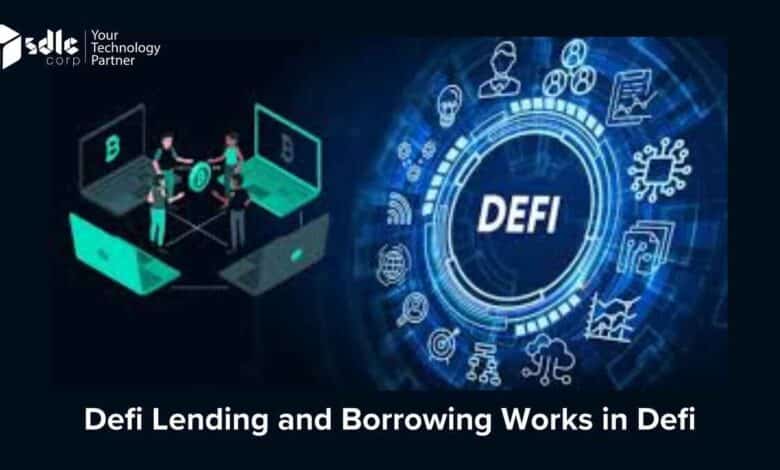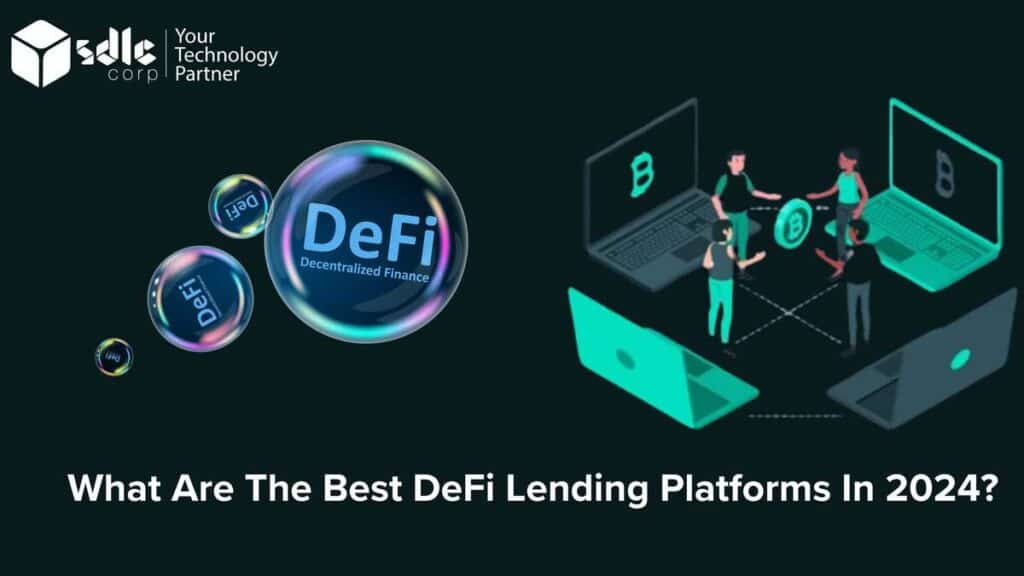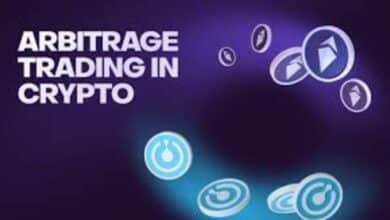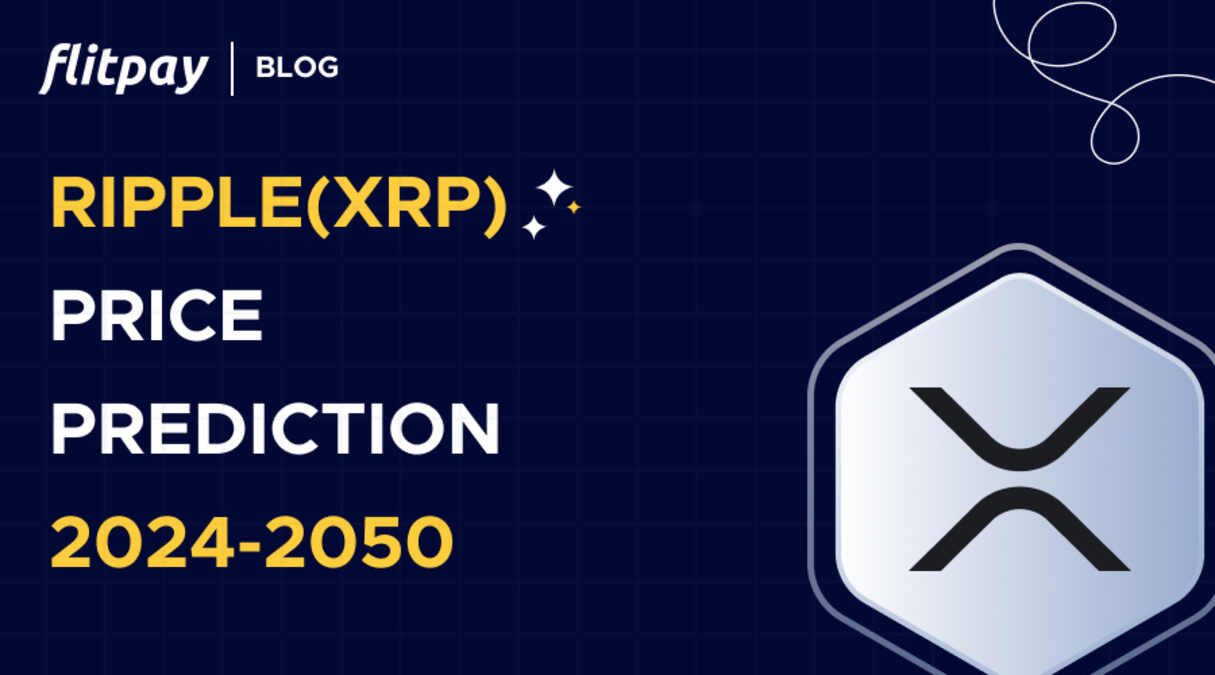DeFi Lending Platforms: The Best Powerful Revolutionizing Financial

DeFi Lending Platforms decentralized Finance (DeFi) lending platforms have quickly become a transformative force within the financial ecosystem. These platforms have opened the door to a new era of borrowing and then lending without the need for intermediaries like traditional banks. In this article, we explore the top DeFi lending platforms, their key features, and why they stand out in the competitive landscape.
What are DeFi Lending Platforms?
DeFi lending platforms operate on blockchain technology, offering users a decentralized approach to financial services. Unlike traditional banks, which require paperwork, background checks, and then credit scores, DeFi platforms allow users to deposit cryptocurrency and then earn interest or borrow against their holdings with ease. Smart contracts, automated protocols running on blockchains like Ethereum, handle these transactions, eliminating the need for intermediaries.
How DeFi Lending Platforms Work
The process of lending and then borrowing through DeFi platforms is straightforward:

- Depositing Assets: Users deposit their crypto assets into the platform’s liquidity pool. This allows others to borrow those assets.
- Earning Interest: In return for providing liquidity, depositors earn interest. The rate of interest is often determined by the supply and then demand of the assets.
- Borrowing: Borrowers can lock their assets as collateral and then borrow against them. Credit checks are not required, in contrast to standard lending methods. Instead, the borrower must provide sufficient collateral, typically overcollateralizing to secure the loan.
Advantages of DeFi Lending Platforms
The rapid adoption of DeFi lending is fueled by its numerous advantages over traditional financial institutions:
- No Intermediaries: Users interact directly with the platform via smart contracts, bypassing banks and reducing transaction fees.
- Global Accessibility: Anyone with an internet connection and then cryptocurrency can participate, offering opportunities to people in underbanked regions.
- Transparency: All transactions are recorded on a public blockchain, making the process open and then auditable.
- Control and Security: Users maintain control of their funds at all times, unlike traditional banks, which have custody over your assets.
Top DeFi Lending Platforms in 2024
1. Aave
Aave is one of the most well-established names in the DeFi lending sector. Launched in 2020, it has rapidly grown into a leading protocol known for its innovative features. Aave allows users to lend and then borrow in a range of cryptocurrencies, including Ethereum (ETH), Dai (DAI), USD Coin (USDC), and more.
Key Features of Aave:
- Flash Loans: Aave introduced the concept of flash loans, which allow users to borrow funds without collateral as long as the loan is repaid within the same transaction.
- Interest Rate Options: Users can choose between fixed and variable interest rates, depending on their preference and then risk tolerance.
- Security: Aave has undergone numerous audits to ensure the safety of users’ funds, making it one of the most secure platforms in the DeFi space.
2. Compound
Compound is another pioneer in the DeFi lending industry. Known for its straightforward user interface, Compound allows users to lend and borrow cryptocurrencies without the need for intermediaries. The platform automatically adjusts interest rates based on the supply and demand for each asset.
Key Features of Compound:

- cTokens: Users get cTokens in exchange for their asset deposits into Compound. These tokens represent their balance in the protocol and can be traded or used elsewhere in the DeFi ecosystem.
- Automatic Interest Rate Adjustments: The protocol adjusts interest rates algorithmically to reflect the current market conditions, ensuring competitive rates for both lenders and borrowers.
- Decentralized Governance: Holders of the platform’s native token, COMP, can vote on governance proposals, allowing the community to influence the future direction of the platform.
3. MakerDAO
MakerDAO is the creator of Dai (DAI), a stablecoin that plays a critical role in the DeFi ecosystem. The platform enables users to borrow Dai by locking up Ethereum (ETH) or other approved assets as collateral. Unlike most DeFi lending platforms, MakerDAO focuses on maintaining the stability of Dai’s value.
Key Features of MakerDAO:
- DAI Stablecoin: Dai is a decentralized stablecoin pegged to the US dollar, providing users with a stable asset to borrow and lend.
- Multi-Collateral Vaults: Users can lock a variety of assets, not just ETH, to mint Dai. This provides flexibility and mitigates risk for borrowers.
- Decentralized Governance: Like Compound, MakerDAO utilizes a decentralized governance model where holders of the MKR token can vote on platform upgrades and risk parameters.
4. Curve Finance
Curve Finance specializes in stablecoin trading and lending. The platform’s focus on low-slippage trading and lending of stablecoins has made it a favorite among DeFi users who prioritize stable value and low risk.
Key Features of Curve Finance:
- Low Slippage and Fees: Curve’s algorithm is optimized for stablecoin swaps, ensuring minimal slippage and lower fees compared to other platforms.
- Liquidity Pools: Users can provide liquidity to pools of stablecoins and earn fees, along with interest, from borrowers and traders.
- Cross-Platform Integration: Curve integrates with other DeFi protocols like Yearn.Finance and Synthetix, increasing its liquidity and earning potential.
5. Yearn.Finance
Yearn.Finance is an aggregator for lending services that automatically moves users’ funds between different DeFi platforms to maximize returns. Users can deposit their assets into Yearn’s vaults, and the protocol will optimize returns by allocating funds to the most profitable lending platforms at any given time.
Key Features of Yearn.Finance:
- Yield Optimization: Yearn automates the process of seeking out the best yields across DeFi protocols, making it a hands-off approach for users who want to maximize returns.
- Vaults: Users can choose different strategies by depositing into various vaults, each designed to optimize returns on specific assets.
- Community-Driven: Yearn.Finance’s governance is entirely community-driven, with YFI token holders proposing and then voting on changes to the platform.
Risks Involved in DeFi Lending
While DeFi lending platforms offer incredible opportunities, they are not without risks.Users need to be mindful of these possible hazards:
- Smart Contract Risk: Although DeFi platforms undergo audits, bugs and then vulnerabilities in smart contracts can lead to the loss of funds.
- Over-Collateralization: Most platforms require users to provide collateral worth more than the loan amount. If the value of your collateral drops too low, it may be liquidated.
- Market Volatility: Cryptocurrencies are volatile, and then sudden price drops can lead to the liquidation of collateralized assets, leaving borrowers at a loss.
Conclusion
DeFi lending platforms are reshaping the financial world, offering unprecedented levels of control, transparency, and then accessibility. Platforms like Aave, Compound, MakerDAO, Curve Finance, and then Yearn. Finance are leading the charge, providing users with innovative ways to lend, borrow, and earn interest on their crypto assets. However, as with any financial system, it is essential to understand the risks and manage them accordingly.
Read more: New Token Airdrop





